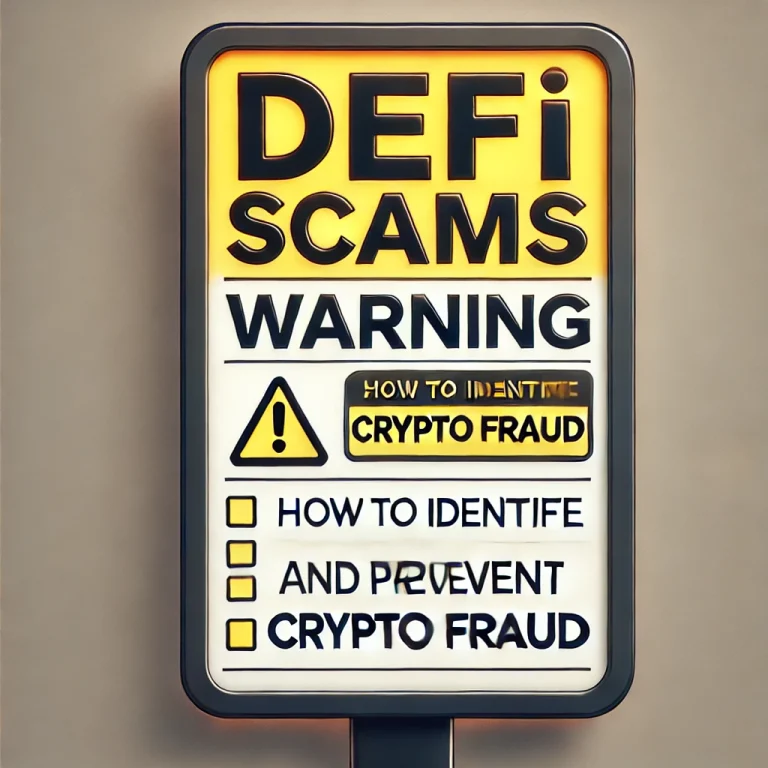New Opportunities and Risks in the 2025 Crypto Market
In recent years, the cryptocurrency market has experienced extreme fluctuations, and 2025 marks a new phase of development. According to CoinGecko, the global crypto market capitalization has surpassed $3 trillion, with Bitcoin (BTC) reaching an all-time high of $85,000 and Ethereum (ETH) successfully upgrading to ETH 2.5, significantly reducing Gas Fees. Additionally, institutional investors such as BlackRock and Fidelity are increasing their exposure to the crypto market, driving further mainstream adoption.
However, despite the opportunities, risks remain significant. Market volatility, regulatory changes, hacking incidents, and project failures continue to pose challenges for investors. To navigate this complex landscape, investors must establish a systematic risk assessment approach and develop scientific investment strategies.
This guide will provide an in-depth analysis of the major risks in the 2025 crypto market and offer practical risk management strategies, helping investors seize market opportunities while minimizing potential losses.
1. Key Crypto Investment Risks in 2025 and Case Studies
1.1 Market Volatility Risk
📌 Case Study: Bitcoin Plunges from $85,000 to $72,000 in 48 Hours
Market volatility remains one of the biggest risks for crypto investors. In March 2025, Bitcoin’s price plunged from $85,000 to $72,000 within just 48 hours, a 15% drop, triggering market panic.
Key factors behind extreme volatility:
- ETF capital outflows: Large withdrawals from BTC ETFs led to panic selling.
- Federal Reserve monetary policy: Interest rate hikes or quantitative tightening impact global risk assets, including crypto.
- Market sentiment shifts: Overheated markets can create bubbles, and when sentiment reverses, prices crash.
🔍 How to Manage Market Volatility Risk?
✅ Monitor BTC ETF inflows and outflows to avoid extreme volatility periods.
✅ Stay informed on Federal Reserve policies and adjust portfolio accordingly.
✅ Focus on long-term investments in BTC and ETH rather than short-term speculation.
1.2 Regulatory & Legal Risk
📌 Case Study: EU’s MiCA Regulation Restricts Unregistered Stablecoins
In January 2025, the EU officially implemented the MiCA (Markets in Crypto-Assets) regulation, tightening compliance requirements for stablecoins, exchanges, and DeFi platforms. Unregistered stablecoins (such as some decentralized stablecoins) are now banned from circulation in the EU, causing market disruptions.
Meanwhile, the U.S. SEC continued to intensify regulatory actions on DeFi projects, leading to fines and shutdowns for multiple non-compliant platforms, resulting in significant investor losses.
🔍 How to Mitigate Regulatory Risk?
✅ Use compliant exchanges like Coinbase or Binance HK to reduce legal exposure.
✅ Stay updated on global crypto regulations to avoid investing in restricted assets.
✅ Avoid high-risk DeFi platforms and focus on projects with strong regulatory backing.
1.3 Security Risk: Hacks and Exploits
📌 Case Study: $320 Million Lost Due to a Smart Contract Vulnerability
Crypto security threats remain a major concern in 2025. In February 2025, a well-known DeFi protocol suffered a security breach due to a smart contract vulnerability, leading to a $320 million loss.
Evolving hacking techniques include:
- AI-driven precision attacks: Hackers use AI-powered tools to automate vulnerability scans and exploit weaknesses.
- Social engineering attacks: Fake emails, websites, or messages trick users into revealing private keys or seed phrases.
🔍 How to Enhance Security?
✅ Use multi-signature wallets (e.g., Gnosis Safe) to enhance security.
✅ Store long-term crypto holdings in cold wallets (e.g., Ledger, Trezor).
✅ Avoid connecting wallets to unknown DApps to prevent malicious authorizations.
1.4 Project & Token Risks
📌 Case Study: AI Token Crashes 95% After Founders Abandon Project
The AI narrative gained massive traction in 2025, leading to a surge in AI-related meme coins and low-quality projects. One popular AI token reached a $1 billion market cap but collapsed to $50 million within three months, as the founders abandoned the project.
🔍 How to Identify High-Risk Projects?
✅ Research team backgrounds to verify industry experience.
✅ Analyze tokenomics to avoid Ponzi-like structures.
✅ Avoid anonymous teams, as they pose a higher risk of exit scams.
2. How to Develop a Smart Crypto Investment Strategy in 2025?
2.1 Portfolio Allocation Strategy
- 60% BTC/ETH (Long-term holdings)
- 30% Blue-chip altcoins (e.g., SOL, LINK)
- 10% High-risk investments (New projects, meme coins)
2.2 Setting Profit & Loss Rules
- Take-Profit Target: 30% gain (sell part of holdings)
- Stop-Loss Limit: 15% loss (exit part of position)
2.3 Understanding Market Cycles
- Bull Market: Gradually sell assets to avoid being trapped at the peak.
- Bear Market: DCA (Dollar-Cost Averaging) into BTC/ETH to lower cost basis.
Risk Management is the Key to Crypto Investing in 2025
Despite the opportunities in the crypto market, effective risk management is more critical than ever in 2025. Holding BTC/ETH long-term, avoiding high-risk projects, and diversifying investments are key strategies for sustainable success.
📢 My Insights:
💡 In my opinion, BTC remains the most stable crypto investment in the long run, while many AI-themed altcoins still have speculative bubbles. Investors should exercise caution when selecting projects.







